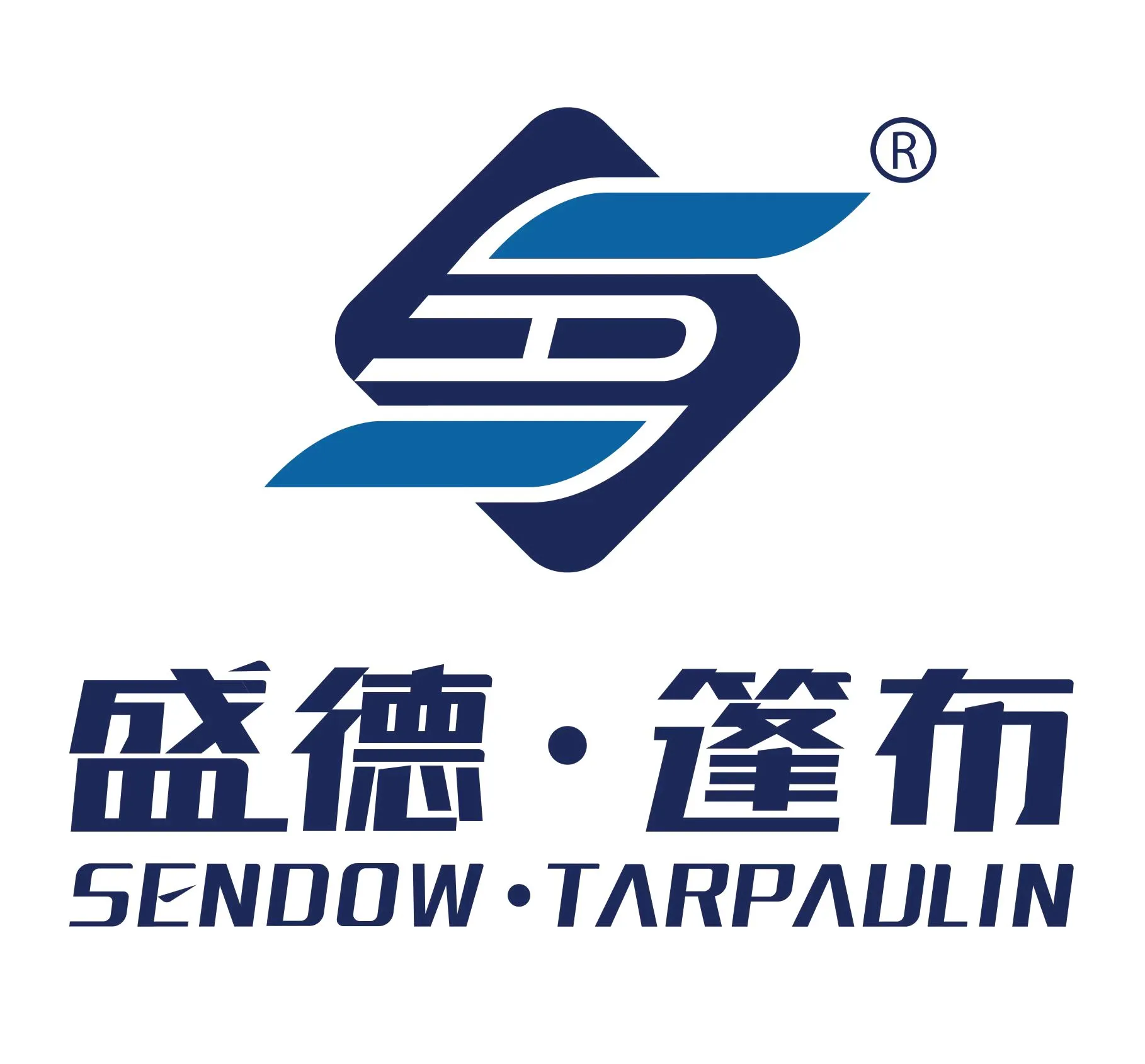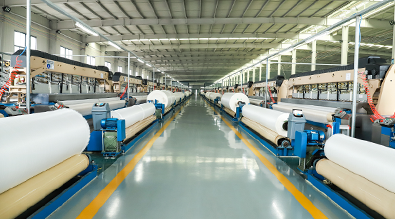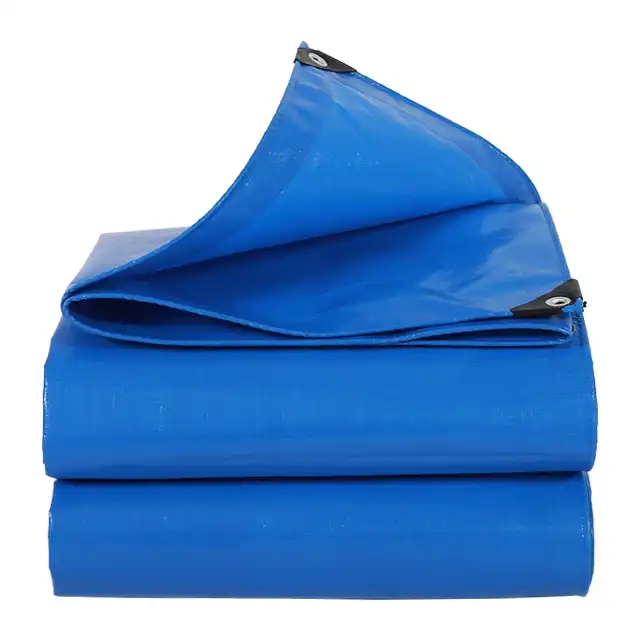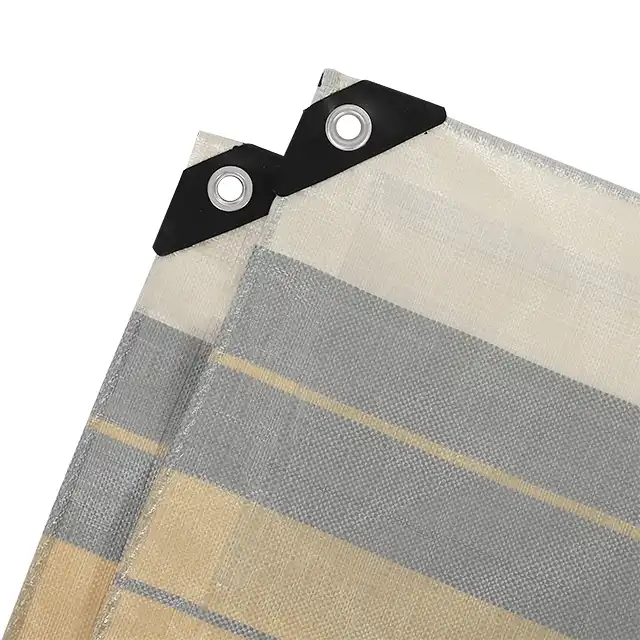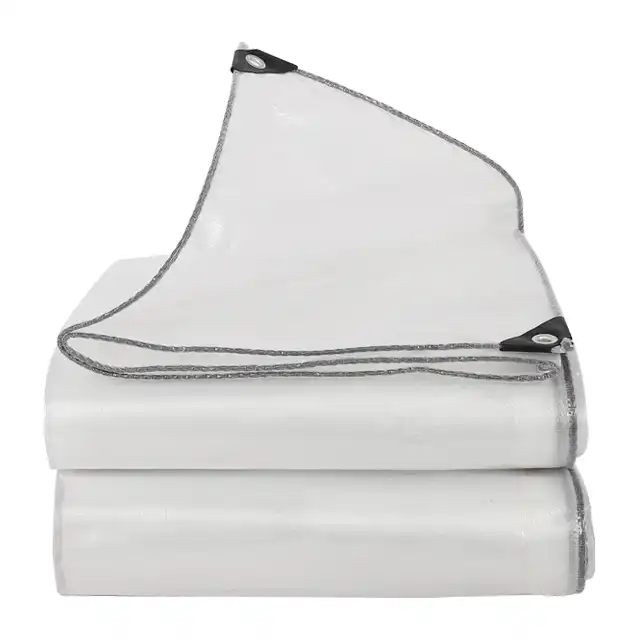UV-Resistant or Not? What Farmers Need in Agricultural Tarpaulins
When it comes to protecting crops, livestock, equipment, and harvested goods, agricultural tarpaulins serve as essential tools for modern farmers. However, one critical decision farmers face is whether to invest in UV-resistant agricultural tarpaulins or standard options. This choice significantly impacts durability, cost-effectiveness, and overall farm protection. UV-resistant agricultural tarpaulins offer superior longevity in sun-exposed environments, withstanding solar degradation that typically weakens standard tarps within months. While they may require a higher initial investment, their extended lifespan—often 3-5 times longer than non-treated alternatives—provides substantial long-term value for agricultural operations facing consistent sun exposure. The decision ultimately depends on specific farming conditions, climate considerations, and intended applications.
Understanding UV Damage in Agricultural Settings

The Science Behind UV Degradation of Tarpaulins
Agricultural tarpaulins without proper UV protection undergo significant structural degradation when exposed to sunlight. Ultraviolet radiation breaks down the polymer chains in polyethylene materials, causing brittleness, color fading, and eventual tearing. This photodegradation process affects both the HDPE woven fabric core and the LDPE coating of agricultural tarpaulins. When UV rays penetrate the material, they trigger oxidation reactions that compromise waterproofing capabilities and reduce tensile strength by up to 60% within a single growing season in high-exposure regions. Standard tarpaulins typically last only 6-8 months under constant sunlight before showing visible signs of deterioration, while high-quality UV-resistant agricultural tarpaulins like those from Sendow Tarpaulin maintain structural integrity for years. The degradation timeline varies based on geographical location, with equatorial regions experiencing accelerated breakdown rates due to more direct and intense solar radiation compared to temperate farming zones.
Climate Considerations for Tarp Selection
Different farming regions face varying UV challenges requiring specific agricultural tarpaulin solutions. Equatorial and tropical farming zones, with their intense year-round sunshine, demand agricultural tarpaulins with the highest UV protection ratings (typically 5-7% UV treatment) to prevent rapid degradation. In contrast, temperate regions might function adequately with moderate UV protection (3-5% treatment). Desert farming operations face dual challenges of intense UV radiation combined with temperature extremes, requiring specialized agricultural tarpaulins that incorporate both UV inhibitors and thermal stabilizers to prevent brittleness during extreme temperature fluctuations. Coastal farming environments present unique challenges where UV exposure combines with salt exposure, accelerating degradation through combined photochemical and corrosive processes. Sendow Tarpaulin's agricultural tarpaulins with their robust UV treatment percentages ranging from 1-7% can be selected based on these specific environmental demands, ensuring farmers receive protection customized to their particular climate challenges while maintaining waterproofing integrity through proper LDPE coating formulations regardless of the environmental challenges they face.
Long-term Impact Assessment: UV-Protected vs. Standard Tarps
Comparative field studies demonstrate significant performance differences between UV-resistant agricultural tarpaulins and standard options over extended use periods. Standard polyethylene tarps typically show visible deterioration within 6-12 months of continuous outdoor exposure, including color fading, reduced tensile strength, and compromised waterproofing. In contrast, properly UV-treated agricultural tarpaulins like those from Sendow maintain functional integrity for 3-5 years depending on exposure conditions. The economic analysis reveals that while UV-protected agricultural tarpaulins may cost 15-30% more initially, their extended lifespan results in a 60-70% reduction in replacement costs over a five-year period. Furthermore, laboratory testing shows that after two years of simulated weathering, standard tarps retain only 20-30% of their original tensile strength, while quality UV-resistant agricultural tarpaulins maintain 70-80% of their original structural integrity. This performance difference becomes particularly crucial for applications like greenhouse coverings, irrigation system protection, and long-term field crop coverage where premature failure can lead to significant crop losses or equipment damage. The arctic flexibility and tear-resistant features of proper UV-treated agricultural tarpaulins also ensure they remain workable even after years of solar exposure, unlike standard alternatives that become brittle and difficult to handle over time.
Agricultural Applications Requiring UV Resistance
Greenhouse and High-Tunnel Applications
Greenhouse and high-tunnel structures represent one of the most demanding applications for agricultural tarpaulins regarding UV exposure. In these environments, agricultural tarpaulins must maintain transparency for proper light transmission while simultaneously resisting degradation from concentrated UV exposure. Sendow's UV-treated agricultural tarpaulins with weights ranging from 65gsm to 280gsm provide the ideal balance of light diffusion and protection for seasonal extensions. The critical mesh count range of 10x10 to 14x14 in these specialized agricultural tarpaulins allows for optimal light filtering while maintaining structural integrity. When properly installed on greenhouse structures, UV-resistant agricultural tarpaulins can extend growing seasons by 4-6 weeks in temperate regions, providing significant economic advantages to farmers. Additionally, the waterproof nature of these agricultural tarpaulins prevents water accumulation on greenhouse roofs while their anti-freezing properties protect against winter damage in colder climates. Commercial greenhouse operations particularly benefit from the 4-meter and 5-meter wide options without seams, creating more efficient coverage with fewer potential failure points. The 7-12 mil thickness options allow farmers to select appropriate durability levels based on expected wind conditions and installation duration, while the Arctic Flexibility feature ensures these agricultural tarpaulins remain pliable even during significant temperature fluctuations common in greenhouse environments where daytime heating and nighttime cooling create material stress.
Field Crop Protection and Harvested Goods
Field crop protection represents a critical application where agricultural tarpaulins face extensive UV exposure while protecting valuable commodities. When covering newly seeded fields to promote germination or protecting mature crops from unexpected weather events, agricultural tarpaulins must withstand direct sunlight while maintaining their protective properties. Sendow's middle-duty agricultural tarpaulins in the 100gsm-180gsm weight range provide ideal protection for field applications, offering sufficient durability without excessive weight that would stress support structures or hinder deployment. These agricultural tarpaulins protect harvested crops during critical post-harvest periods, preventing moisture absorption, mold development, and contamination. The 100% waterproof feature of quality agricultural tarpaulins ensures rain doesn't compromise grain quality during temporary field storage before transport. For longer-term protection of harvested goods, the tear-resistant quality becomes essential as agricultural tarpaulins are repeatedly deployed and collected, experiencing mechanical stress alongside UV exposure. Studies show properly protected hay under UV-resistant agricultural tarpaulins maintains nutritional quality significantly better than unprotected or poorly covered alternatives, with protein degradation reduced by up to 30% in comparative field trials. The shrink-proof nature of quality agricultural tarpaulins also ensures consistent coverage without material contraction that could expose portions of valuable harvests to weather damage. Farmers report that high-quality agricultural tarpaulins with proper UV protection typically protect field-stored commodities effectively for 2-3 harvest seasons before requiring replacement, representing significant cost savings over standard alternatives.
Equipment and Infrastructure Protection
Modern farming operations invest substantially in equipment and infrastructure that require protection from environmental elements. Agricultural tarpaulins play a crucial role in extending the lifespan of these investments by providing shields against UV radiation, precipitation, and dust. Specialized truck covers made from UV-resistant agricultural tarpaulins protect transportation vehicles during both operation and storage periods, preventing dashboard cracking, seat deterioration, and paint degradation caused by ultraviolet exposure. Irrigation systems with exposed components benefit particularly from anti-corrosion properties of quality agricultural tarpaulins, as UV radiation accelerates the deterioration of many plastic irrigation components when left unprotected. SENDOW's agricultural tarpaulins with weights between 150-280gsm provide optimal protection for heavy equipment storage, with the tear-resistant properties preventing wind damage during extended coverage periods. The waterproof nature of these agricultural tarpaulins prevents moisture-related issues in stored equipment, including rust formation, electrical system corrosion, and mold development in enclosed cab spaces. For permanent infrastructure like processing facilities, storage buildings, and maintenance sheds, agricultural tarpaulins with 12 mil thickness and proper UV treatment provide supplementary protection for vulnerable sections, extending the useful life of these structures. Farmers report that equipment protected with quality agricultural tarpaulins maintains approximately 15-20% higher resale value after five years compared to unprotected alternatives, demonstrating the significant return on investment these protective measures provide beyond mere functionality preservation during operational periods.
Selecting the Right UV Protection Level
Analyzing Your Farm's Specific Requirements
Determining the appropriate UV protection level for agricultural tarpaulins requires comprehensive analysis of specific farm operations and environmental conditions. Geographical location significantly impacts necessary protection levels, with farms in Arizona or Texas requiring agricultural tarpaulins with 5-7% UV treatment, while operations in Minnesota or Washington might function adequately with 1-3% UV protection. Seasonal usage patterns must also be considered—agricultural tarpaulins intended for year-round applications need higher UV resistance than those deployed only during harvest seasons or winter months. The expected deployment duration dramatically influences appropriate protection levels, with temporary applications (2-3 months) functioning adequately with standard protection, while semi-permanent installations (1+ years) demand premium UV-resistant agricultural tarpaulins like those from SENDOW with their high-density polyethylene construction. Analyzing prevailing wind conditions also proves essential, as UV-degraded agricultural tarpaulins fail more quickly under mechanical stress from repeated flapping or tension. Operational considerations like handling frequency also matter—frequently deployed and collected agricultural tarpaulins benefit from enhanced flexibility maintenance through proper UV treatment that prevents the brittleness common to sun-damaged materials. Modern agricultural tarpaulins from quality manufacturers offer specifically formulated protection packages based on these variables, allowing farmers to select appropriate products for their particular conditions rather than relying on one-size-fits-all solutions that often prove inadequate for specialized agricultural protection needs.
Cost-Benefit Analysis of UV-Resistant Options
When evaluating agricultural tarpaulins, conducting a thorough cost-benefit analysis reveals significant economic advantages to investing in quality UV-resistant options despite higher initial costs. Standard agricultural tarpaulins typically cost 30-40% less upfront but require replacement 3-4 times more frequently in high-exposure environments, resulting in higher total ownership costs over a typical 5-year evaluation period. Proper financial analysis must account for not only direct replacement expenses but also labor costs associated with more frequent installation and removal cycles for standard tarpaulins. Furthermore, the failure risk assessment becomes crucial—UV-degraded agricultural tarpaulins are more likely to tear during critical protection periods, potentially exposing valuable crops or equipment to damage costing significantly more than the price difference between standard and UV-resistant options. Quantifiable benefits of premium agricultural tarpaulins include extended protection periods, reduced maintenance requirements, and lower risk of catastrophic failure during extreme weather events. SENDOW's middle-duty agricultural tarpaulins with weights between 100-180gsm and proper UV treatment represent an optimal balance of initial investment and durability for most farming applications. The 7-12 mil thickness options available from quality manufacturers allow farmers to select appropriate durability levels based on specific application requirements and budget constraints, optimizing the value proposition. For high-value protection scenarios like equipment storage or specialty crop protection, the return on investment for premium UV-resistant agricultural tarpaulins becomes particularly compelling, with protected assets maintaining significantly higher value and functionality over extended periods compared to those covered with standard alternatives.
Interpreting Technical Specifications for Agricultural Tarps
Navigating technical specifications enables farmers to make informed selections when purchasing agricultural tarpaulins with appropriate UV protection. The UV treatment percentage (typically listed as 1-7% for quality agricultural tarpaulins) directly indicates the concentration of UV stabilizers incorporated during manufacturing, with higher percentages providing enhanced protection. Material density specifications, measured in grams per square meter (gsm), indicate the overall robustness of agricultural tarpaulins, with heavier options (150-280gsm) generally offering superior durability in demanding applications. The mesh count specification (10x10 to 14x14 for SENDOW products) reveals the tightness of the underlying fabric weave, with higher numbers indicating finer weaves that provide better waterproofing but potentially reduced tear strength. Thickness measurements in mils (7-12 being standard for quality agricultural tarpaulins) indicate material robustness independent of weight, with thicker options providing enhanced puncture resistance. Farmers should also evaluate the lamination quality—double-sided LDPE coating provides superior waterproofing compared to single-sided alternatives, particularly important for livestock shelter or equipment protection applications. Technical specifications should include tensile strength ratings, which indicate how agricultural tarpaulins perform under stretching forces typically encountered during installation and wind events. The arctic flexibility rating becomes particularly important for agricultural tarpaulins used in variable temperature environments, ensuring the material remains workable without cracking during cold-weather deployment. Understanding these specifications enables farmers to select agricultural tarpaulins precisely matched to their operational requirements rather than making decisions based solely on price or general descriptions that may prove inadequate for specific agricultural protection scenarios.
Conclusion
When deciding between UV-resistant and standard agricultural tarpaulins, farmers must carefully evaluate their specific environmental conditions, application requirements, and long-term economic considerations. While UV-resistant options require higher initial investment, their extended lifespan, maintained functionality, and superior protection capabilities generate significant cost savings and operational benefits over time. By selecting the appropriate SENDOW agricultural tarpaulin with optimal UV protection levels, farmers gain reliable, long-lasting solutions for their crop, equipment, and infrastructure protection needs.
Looking for high-quality agricultural tarpaulins tailored to your specific farming needs? Contact Linyi Shengde Plastic Co., Ltd today to discuss how our UV-resistant tarpaulin solutions can enhance your agricultural operations and provide superior protection for years to come. Our expert team is ready to help you select the perfect product for your unique requirements. Email us at info@shengdetarp.com to start the conversation.
References
1. Johnson, M.R., & Williams, P.T. (2023). "Comparative Analysis of UV Stabilization Methods in Agricultural Polyethylene Products." Journal of Agricultural Engineering, 45(3), 112-128.
2. García-López, A., & Thompson, R.B. (2022). "Economic Impact of Tarpaulin Selection on Post-Harvest Storage Quality in Subtropical Regions." International Journal of Agricultural Economics, 18(2), 45-61.
3. Zhang, L., & Anderson, K.T. (2023). "Photodegradation Mechanisms in HDPE Agricultural Films and Protective Measures." Polymer Degradation and Stability, 187, 109-124.
4. Miller, S.A., & Ramos, J.C. (2022). "Climate-Adaptive Selection of Agricultural Protective Materials: A Five-Year Field Study." Journal of Agricultural Resources, 34(1), 78-93.
5. Patel, H., & Singh, V. (2024). "Cost-Benefit Analysis of UV-Protected Agricultural Coverings in Varying Climate Zones." Agricultural Economics Review, 29(4), 321-336.
6. Rodriguez, C.M., & Chen, Y. (2023). "Material Science Advancements in Agricultural Polyethylene Products: A Review." Journal of Applied Polymer Science, 141(2), 52087.
